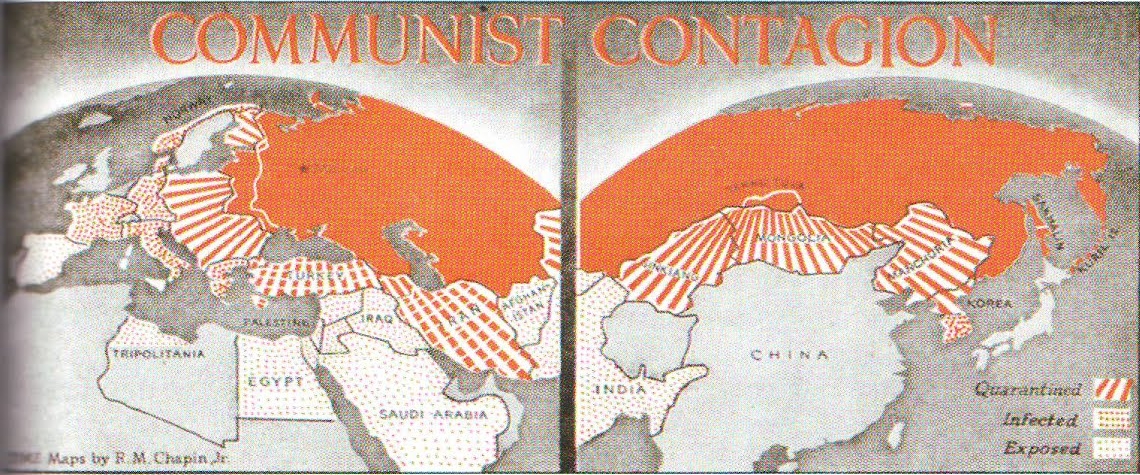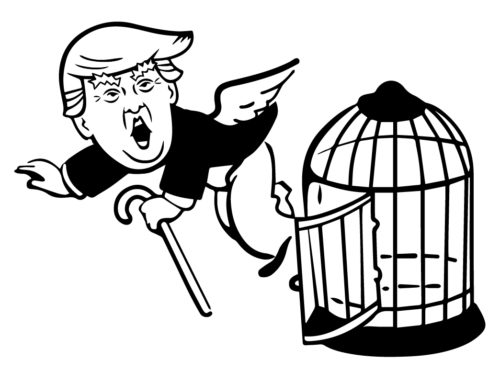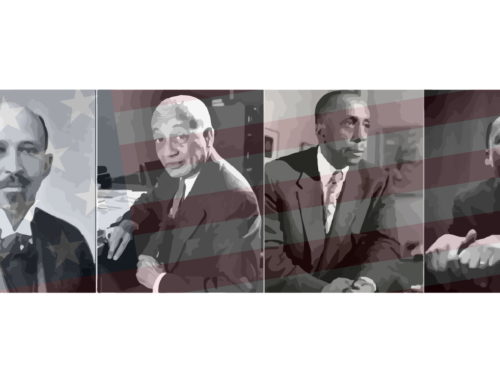by Craig Collins
By the mid-20th century, Marx’s conviction that socialism was destined to replace capitalism appeared to becoming reality. In 1956, Soviet premier Nikita Khrushchev was so confident that history was on his side, he boasted that socialism would soon bury capitalism.[1] Most of the Eurasian land mass was governed by communist parties that claimed to be building socialism. U.S. propaganda films depicted maps of a malignant red menace spreading around the world.
Back then, the globe was commonly divided into three worlds: the developed capitalist nations became known as the first world; the second world encompassed the self-proclaimed “socialist” nations of Eastern Europe and the Soviet Union; and the third world included Europe’s former colonies in Asia, Africa, and Latin America. In China and several other third world countries, communist-led national liberation movements were driving out Western imperialism and endeavoring to transform their backward peasant economies into modern socialist states.
However, even then, there were clear signs that genuine democratic socialism had failed to materialize. While the Marxist leaders of the second world claimed to be building socialism, the authoritarian, centrally planned industrial states they ruled bore little resemblance to the egalitarian, working class democracies Marx and Engels had in mind. By the latter half of the 20th century, working people throughout the second world, from Hungary and Czechoslovakia to Poland, were openly rebelling against the “socialist workers’ states” that claimed to represent them.
In hindsight, with the heavy ideological fog of the Cold War behind us, it is obvious that the state-run industrial systems that both sides mislabeled socialist were never working class governed democracies.[2] So actually, socialism didn’t fail—it never existed. But that doesn’t explain why the powerful state-run industrial societies of the USSR, Eastern Europe, and China—that everyone had falsely branded socialist—failed to thrive and eventually reentered the world capitalist system.
This turn of events was especially vexing for old school Marxists and communists. They wanted to believe that these statist industrial societies were genuine socialist democracies at the vanguard of history, leading humanity down the evolutionary road toward classless communism. After all, why would a socialist nation, supposedly run by and for working people, ever choose to reverse the course of history and rejoin the capitalist system?
To understand why these statist industrial societies buckled we must first abandon any pretense that they were ever really socialist. However, just because these government-run industrial economies weren’t socialist, doesn’t explain why they would become so dysfunctional that their “communist” rulers would eventually privatize major sectors of their economy and permit foreign capital to exploit their country’s labor and resources. However, if we remove the ideological blinders and thoughtfully consider the evidence history offers, the reasons for their re-entry into capitalism’s gravitational orbit become clearer.
Ironically, the global expansion of industrial modernization in the 20th century played a major role in first creating and then undermining these statist industrial experiments. Once unleashed, the fossil-fueled, profit-driven dynamo of the Industrial Revolution became a rapacious, invasive force that could not be contained. The hydrocarbon powered technologies of capitalist production, transportation, communication, and warfare proved impossible to restrain. Of course, that doesn’t mean that some didn’t try. From the beginning, the same imperialist powers who championed industrialization in Europe attempted to limit its growth to serve the narrow interests of their colonial empires.
European powers created roadblocks to fossil fueled industrialism by restricting the movement of capital between rival empires and limiting industrialism within their colonies to enterprises that enriched the mother country. But those who tried to limit the modernization process to serve their imperial interests found themselves on the wrong side of history. Colonial restrictions imposed bottlenecks on capital and market expansion, intensified conflict between European powers, and incited anti-colonial resistance.
Eventually, these fetters on the industrialization dynamo were shattered by the crises they spawned—a global depression sandwiched between two world wars followed by a powerful anti-colonial insurgence. Yet, instead of crippling capitalism, these systemic convulsions turned out to be massive growing pains. So after World War II, fossil fueled industrialism gained a new lease on life.
As Europe’s war ravaged colonial empires collapsed, industrial modernization was championed by the political leaders of all three worlds. In the first world, the US oversaw the rebuilding of Western capitalism, freed from the colonial restraints on international trade and investment. American dollars and abundant, cheap fossil fuels reenergized and rebuilt Japan and Europe’s war-torn economies under US hegemony. Marshall Plan beneficiaries invested about 20 percent of their loans in petroleum products.[3] At Bretton Woods, the US fashioned the World Bank, the International Monetary Fund (IMF), and the General Agreement on Tariffs and Trade (GATT). These new international institutions removed most restrictions on the exploitation of labor and resources throughout the “free world.”
In the second world, the USSR and the nations of Eastern Europe began rebuilding behind an “iron curtain” that prevented western banks and corporations from penetrating these centrally planned national economies. Instead, industrialization was directed by “socialist” central planners. They initiated a process that looked very similar to Western modernization: coal and oil fueled rapid urbanization, giant industrial projects, agricultural mechanization, and environmental devastation.
Industrial modernization took off in the third world as well. The leaders of these newly independent nations—whether communists, capitalists, or non-aligned nationalists—were eager to overcome their legacy of colonial exploitation and poverty through industrial development. However, where communists led successful nationalist insurrections against foreign domination—as in China, Cuba, and Vietnam—they withdrew their countries from the world capitalist system. Like the Soviet Union, their professed goal was self-reliant, “socialist” modernization. Although actual socialism was never achieved, large countries like the USSR and China did possess the sizeable population and resource base needed to initiate rapid industrialization under government direction.
However, within several decades, even these large countries ran into some debilitating limitations that put state planned industrialization at a considerable disadvantage compared to Western capitalism. Eventually, the impediments to modernization that confronted these state-controlled, nationally-contained economies led to stagnation, political instability, and ultimately their reentry into the global capitalist system.
In the first place, these insular, statist systems did not benefit from the global wealth pump operated by their Western capitalist rivals. After World War II, the Bretton Woods financial and trade agreements encouraged capital and resources to move easily around the “free world.” They allowed giant multinational corporations to access cheap labor, energy, and vital resources wherever anti-capitalist insurgencies could be crushed and a stable investment climate secured. This capacity to exploit the labor, energy, and raw materials of a vast underdeveloped periphery permitted American, European, and Japanese corporations to reap most of the benefits of modernization while imposing most of the costs and hardships on the third world.
As a result, Western capitalist nations were able to raise the real wages and improve the living standards of their citizens by taking full advantage of their dominant position in the world economy. The wealth generated by global domination and abundant energy generated a prosperous middle class that became the essential consumers of the mass produced commodities that saturated Western markets.
This advantageous situation contrasted sharply with nationally-contained “socialist” industrialization in the second world. When these insular economies embarked on ambitious programs of industrialization, their central planners had to extract all of the wealth needed to modernize from their own limited resource base and from the labor of the very peasants and workers they claimed to represent. Without an exploited periphery to provide cheap labor and raw materials, government directed modernization programs were forced to concentrate—within their own national borders and over a few decades—all the sacrifices, deprivations, and dislocations that first world nations had imposed upon their underdeveloped dependencies for over a century.
In addition, when it came to pursuing technological innovation, state directed industrialization experienced conflicting incentives. Central planners wanted to modernize; their 5-year plans required managers to reach ever-higher production targets. However, the political legitimacy of “socialism” relied not only on modernization; it also rested on the keystone promise of job security and full employment. Major lay-offs were to be avoided.
Consequently, party officials often discouraged innovation and automation if it eliminated jobs or required the major expense and social dislocation of retraining and relocating the labor force. Thus, new labor saving technologies were not always embraced because they often disrupted, undermined, and complicated the central plan. Thus, compared to its capitalist rival, nationally restricted, centrally planned “socialism” was a more rigid, inefficient industrialization process.
By contrast, Western capitalists had no allegiance to their workforce or to the dictates of any state plan. In addition, the profit motive provided ample incentives to cut labor costs wherever possible through innovation, automation, outsourcing, and lay-offs. For better and worse, statist industrialization lacked capitalism’s facility for shedding unprofitable enterprises; profiting from job insecurity and unemployment; and moving capital wherever it could reward investors with the highest rate of return.
Capitalism is bent on maximizing profit toward the goal of further capital expansion and accumulation. This made it better suited to take full advantage of rapid, flexible, globalized, fossil fueled modernization than its statist rivals. Ever since the Industrial Revolution, the secret to the success of capitalism’s cancerous metabolic expansion has been it’s insatiable capacity to gorge itself upon the Earth’s vast hydrocarbon reservoirs. Cheap abundant energy proved essential to maximizing profit through automation coupled with swift, inexpensive global transportation and communication.
Maximizing profit—the prime directive of every capitalist enterprise—requires continual efforts to lower labor costs and increase productivity. Automation has been the most successful way to increase productivity and reduce labor costs. By replacing human labor with machines powered by cheap fossil energy, automation not only reduces the size of a company’s labor force, it also allows the remaining workers to produce far more for each hour on the job.
In addition, plentiful hydrocarbons are essential for fueling global chains of extraction, production, and distribution. Corporate profits are enhanced when inexpensive energy keeps shipping and communication costs low enough that production can be outsourced wherever labor and resources are cheapest. With cheap energy, raw materials can be extracted and shipped easily from distant locations; and finished products can be quickly distributed throughout a global market.
Thus, the profit motive encourages capitalists to use abundant energy to automate, outsource, and access cheap labor and resources on a global scale. Furthermore, the need for capitalists to sell their commodities creates another incentive to use cheap hydrocarbons to create the distribution, advertising, and information networks needed to globalize their markets.
Without these built-in incentives for rapid, ceaseless expansion and a global resource and labor pool to exploit, “socialist” state planners found themselves unable generate the wealth needed to create the sizeable, prosperous middle class found in the West. As the gap between the people and their “communist” rulers grew, dissatisfaction with unaccountable, bureaucratic “socialism” permeated statist societies from top to bottom. But while the glowing promises of socialist propaganda lost their shine for the those at the bottom of these bureaucratic behemoths, it was the government elite that eventually embraced the prospect of transforming themselves from fake communists into real capitalists.
By the final decades of the 20th century, it had become obvious to “communist” elites that a capitalist makeover was the quickest route to avoiding economic ossification and political upheaval, while enhancing their wealth and retaining their grip on power. This capitalist conversion was far more disorganized and disruptive in the Soviet Union and Eastern Europe than in China.[4] But, in every case, party bureaucrats privatized their economies, struck deals with Western corporations, and transformed themselves from privileged planners into corporate managers.
The relative ease with which this conversion was made—without bloody civil wars or wholesale social collapse—demonstrates the fundamental class compatibilities between the statist and capitalist versions of industrial society. No fundamental transformation of class hierarchies was necessary: state planners morphed into corporate managers, while workers simply remained workers.
If these had been prosperous socialist democracies, would their citizens have abandoned them to resume dismal lives as alienated, exploited drones under capitalism? No way! However, this was not the case. Instead, statist societies were dominated by inefficient, unaccountable bureaucracies that managed every walk of life. This bureaucratic elite was a self-serving, impassive ruling class, unresponsive to public criticism. At best, the quality of the jobs, goods, and services statist planning provided proved highly unsatisfactory for everyone except this wealthy, politically privileged elite. Thus, like industrial capitalism, alienation pervaded every aspect of life under industrial “socialism.”
This situation left most working people completely alienated from, and disillusioned with, the professed ideals of socialism. So when these centrally planned systems began to implode under the burden of their own bureaucratic weight, corruption, and inefficiency, those everyday people who imagined they might fare better under capitalism were not sorry to see “socialism” go.
Looking back over the last century, it appears that the violent imperialist expansion of Western capitalist industrialism produced a revolutionary nationalist backlash. Under the banner of socialism, some nationalist revolutions rejected capitalism but embraced the promise of modernization. However, rapid industrialization proved incompatible with democratic, working class governance right from the start, so genuine democratic socialism never materialized.
To make matters worse, state directed modernization developed serious problems as well. Unlike capitalism, the political legitimacy of “socialism” relied on the provision of rudimentary social services and full employment. These priorities prevented statist industrialism from reaping the full productive capacities of ruthless, profit-motivated automation.
In addition, the absence of an exploited periphery prevented insular statism from externalizing the hardships and reaping the enormous benefits of Western capitalism’s globalized, industrial wealth pump. Compared to industrial capitalism, statism was unable generate the enormous wealth and prosperous middle class afforded by the globalized exploitation of labor and resources.
Eventually, these experiments in nationally confined, statist industrialization ossified and stagnated under the burden of self-serving bureaucracies. Faced with economic stagnation, popular dissatisfaction, and a crisis of legitimacy, state planners embarked on a process of privatizing their economies and reaping the rewards of bargaining with the devil of foreign capital. This capitalist make-over has allowed former “communist” elites to enrich themselves while maintaining their positions of power and privilege.
So far, the disillusioned masses of the second world have acquiesced to this capitalist makeover in the faint hope that real capitalism might be an improvement over fake socialism. But today it appears that industrial capitalism has also past its expiration date and may soon join statism in the dumpster of history. It has depleted the rich reserves of fossil energy that allowed it to trash the planet in its malignant pursuit of profit, power, and global dominance. By defeating every effort to bring it under democratic control, industrial civilization seems destined to preside over its own self-inflicted ecocide.
Craig Collins Ph.D. is the author of Toxic Loopholes (Cambridge University Press), which examines America’s dysfunctional system of environmental protection and the international system’s failure to confront climate chaos. He teaches political science and environmental law at California State University East Bay and was a founding member of the Green Party of California. His forthcoming books: Marx & Mother Nature and Rising From the Ruins: Catabolic Capitalism & Green Resistance reformulate Marx’s theory of history & social change and examine the emerging struggle to replace catabolic capitalism with a thriving, just, ecologically resilient society. [ccollins@igc.org]
Image: Early Cold War Era propaganda map.
[1] Although his statement, “Whether you like it or not, history is on our side. We will dig you in.” (bury you) has been attributed to Khrushchev at several different times, the most reliable sources seem to conclude that he made this claim in 1956 in a speech to Western ambassadors in Moscow.
[2] For a more detailed analysis see: Collins, Craig. “Democratic Socialism: The Impossible Dream?” Counter Punch. (Nov. 30, 2018.) https://www.counterpunch.org/2018/11/30/democratic-socialism-the-impossible-dream/
[3] Auzanneau, Matthieu. Oil Power & War. (Chelsea Green, 2018): 192.
[4] Much like Venezuela today, the Soviet Union’s disruptive demise was triggered by a dramatic drop in global petroleum prices that cut deeply into the USSR’s vital oil export revenues. The US fomented this crisis by encouraging Saudi Arabia to flood the world oil market with Saudi crude. Auzanneau, Matthieu. Oil Power & War. (Chelsea Green, 2018): 394-5.










Leave A Comment